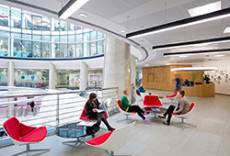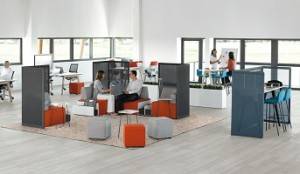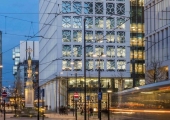May 7, 2014
Green buildings may not enhance job satisfaction and performance, claims study
 In March a report from the British Council for Offices appeared to show that people are happier and more productive when working in green buildings. But the idea that staff find greater job satisfaction when they work in environmentally friendly surroundings is challenged by a new study from researchers at the University of Nottingham and the Centre for the Built Environment at the University of California, Berkeley. It found that, contrary to other research, people working in LEED certified buildings appear no more satisfied with the quality of their interior design and fit-out and may enjoy no more overall level of job satisfaction than those working in less green buildings. The research was carried out by Stefano Schiavon at Berkeley and Sergio Altomonte of the University of Nottingham and published in the April edition of Building and Environment.
In March a report from the British Council for Offices appeared to show that people are happier and more productive when working in green buildings. But the idea that staff find greater job satisfaction when they work in environmentally friendly surroundings is challenged by a new study from researchers at the University of Nottingham and the Centre for the Built Environment at the University of California, Berkeley. It found that, contrary to other research, people working in LEED certified buildings appear no more satisfied with the quality of their interior design and fit-out and may enjoy no more overall level of job satisfaction than those working in less green buildings. The research was carried out by Stefano Schiavon at Berkeley and Sergio Altomonte of the University of Nottingham and published in the April edition of Building and Environment.























May 7, 2014
The business of workplace design and management; new issue of Insight is now available
by Sara Bean • Comment, News, Newsletter, Workplace design